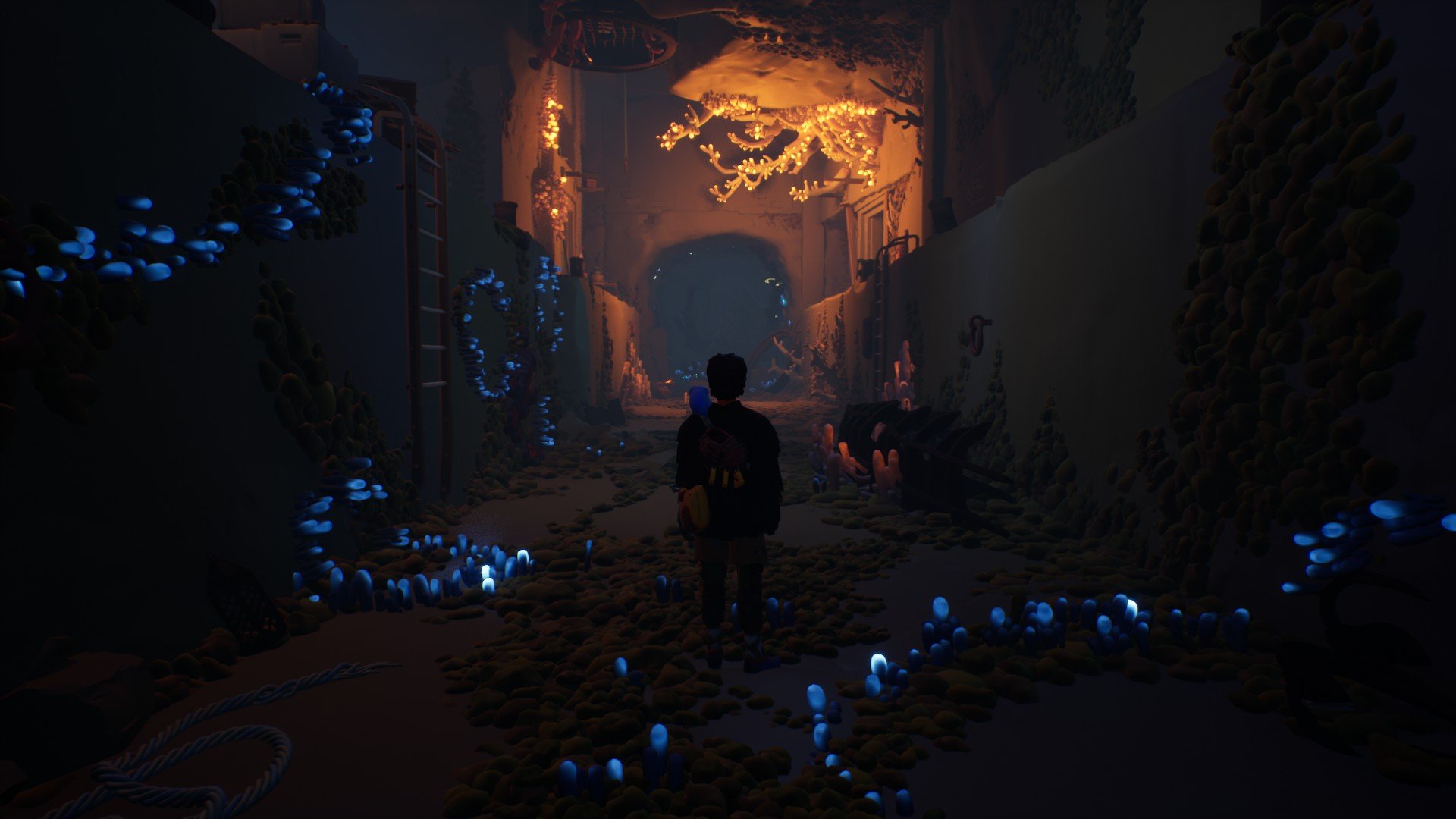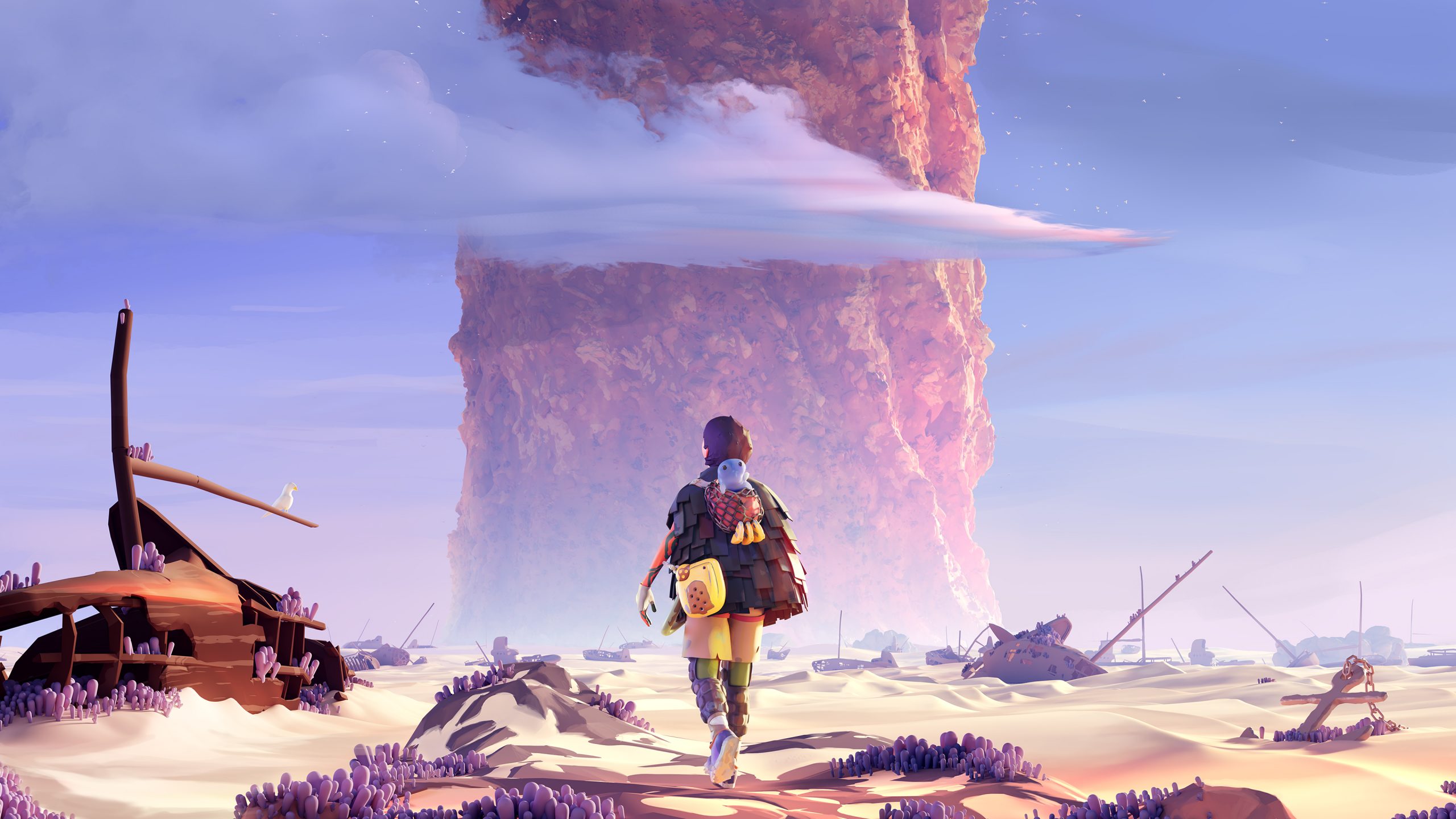Jusant is the new game from Don’t Nod, the creators of the Life is Strange series, among others. This time, the studio invites us to climb a tower whose top is hidden in the clouds. An epic placed under the sign of silence and contemplation. Coming from them, it’s a fairly atypical proposition. Is it worth the detour? Here is our verdict.
Don’t Nod Entertainment is Vampyr, Life is Strange, but also Tell Me Why and Twin Mirror. It’s a studio that wants to deliver poignant stories through narrative games with crafted dialogue. So when Jusant was announced, it was a bit of a surprise. It’s a game of escalation, narrative certainly, but where progression takes place in total silence. No dialogue, no interaction with other people, none of that. From a distance, this seems like a risky bet for Don’t Nod. Did the developers do the right thing by stepping out of their comfort zone by offering us this contemplative experience?
Silence, it’s rising
Jusant being a game with little talk, we quickly get to the heart of the matter. The initial premise is simple, we play a young person who has obviously wandered in the desert for a certain time. She obviously has a goal in mind: to climb an immense tower which is located right in the middle of the desert expanse littered with boats and anchors. What is at the top of the building? Why don’t we see a living soul around us? This is the type of question to which we will have to provide answers. And it’s not easy to tell a story without uttering a single word.
The character we play is alone in the world, or almost. There simply isn’t a human he can interact with. The climb is therefore calm, and it is really relaxing. This is also the objective of the studio. Above all, he wants to offer a title in which we concentrate on climbing and the scenery around us. Jusant is an ode to contemplation, and it manages to easily bring us into this state.
It’s not just the visual that gives us a feeling of relaxation. The settings are beautiful and varied, of course, but it is the complete silence that is captivating. We only hear the sound of our footsteps, the wildlife, the wind, the flight of birds, and sometimes, the echoes of the tower’s past. Because yes, there was life before our arrival. The inhabitants have disappeared, but their facilities, their businesses and their houses are still there. To find out what happened, notes are scattered here and there, and they allow us to obtain information about the tower and the functioning of the society that was there. It’s quite interesting, and it’s not the only way to tell the story. Everything we see tells us something about the world of Jusant, it’s a beautiful use of environmental storytelling.

We thus understand that water is now nothing more than an old legend told by the ancients. Rain is a children’s tale, like the seas and oceans. Some people therefore undertook a journey into the desert to try to find this precious resource which powered the tower. Others decided to go all the way to the top of the latter, a risky venture that never paid off. It is indeed possible to retrace, in parallel with the ascent, the adventures of an intrepid girl who made the decision to climb to the top. His story is touching, even sometimes gripping, and discovering it in its entirety represents a great secondary objective.
The mountain, that you win
The ascent is not easy, and it is done casually, that is to say with pitons, a rope, and hands that are much too powerful for a person of this size. The most important element of the equipment is by far the piton, and we have a total of 4 of them. They are used to climb the thousand and one walls that we encounter. When we start to climb, we place a first piton which is used to hold us in the event of a fall. We can then place the other three anywhere. If you are climbing a long wall, it is better to apply it regularly along the way. They then prevent us, in the event of a fall, from falling all the way back down.
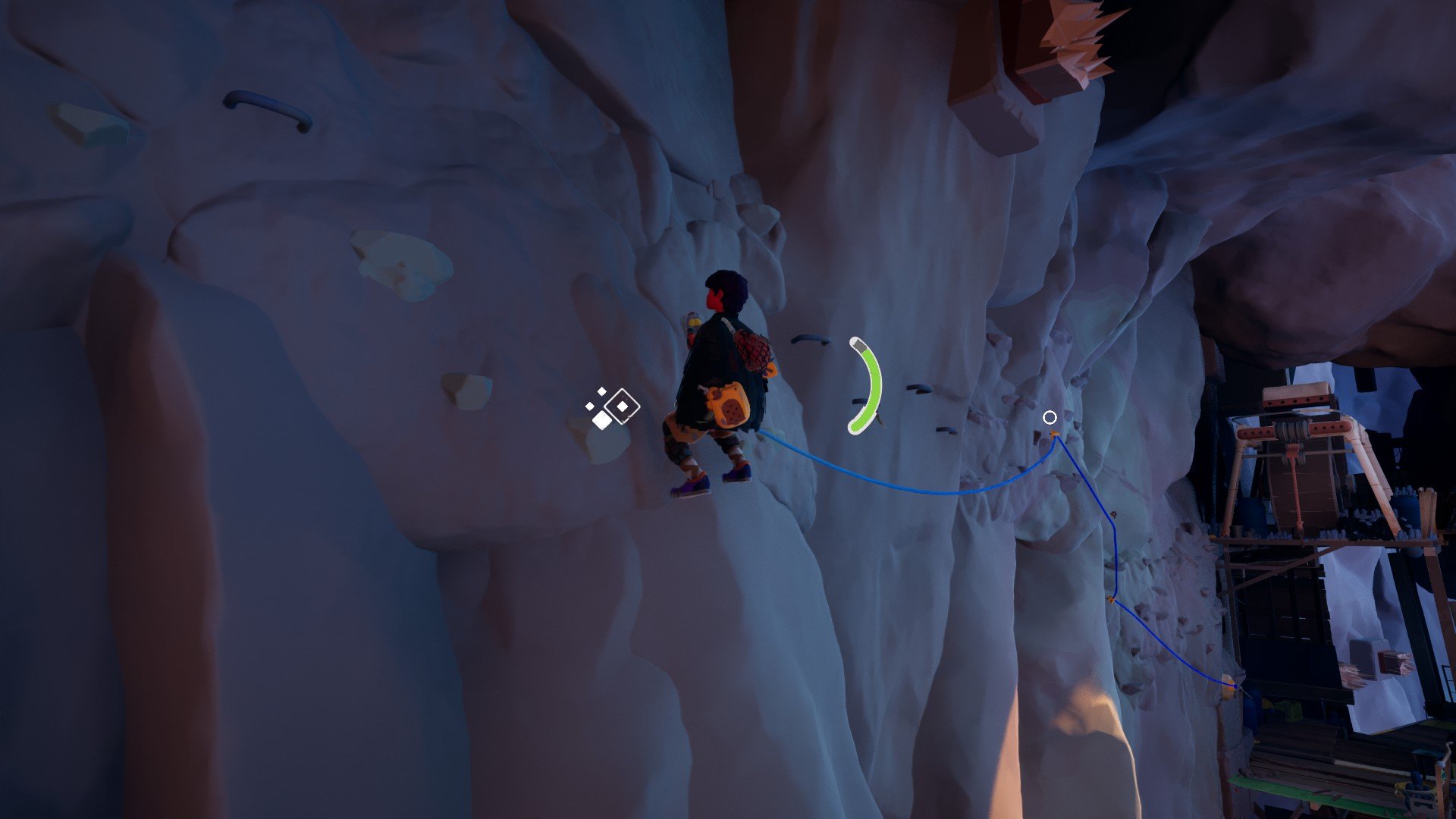
You also need to watch your stamina bar, which gradually empties when you move on a wall. The more tiring our movements are, like jumping, the faster it empties. To regain it, you can relax one of your hands in the middle of the ascent, or climb up to a checkpoint where you anchor yourself. It’s pretty well thought out, and above all never frustrating. On the other hand, the handling of the character is sometimes. It lacks precision, and it’s a little annoying depending on the game sequences. Fortunately, death does not exist in Jusant. This would prevent the experience from fully embracing its contemplative character. So, if you fall, the only consequence is to have lost time, even if the goal is not to hurry. We therefore progress without worrying, which allows us to enjoy the sumptuous panoramas of Jusant.
As for climbing, it is not done by pressing a single button to climb up. On a controller, the character’s left hand is handled by the LT (or L2) trigger while their right hand is handled by the RT (or R2) trigger. This makes the climb more technical, since you have to remember to release one of the two hands to reach the next hold. That said, it’s not at all tedious. It’s actually easier to handle than it seems. In fact, you can go so far as to speed up the process by pressing both keys many times in a row at the same time. Our mountaineer then climbs without the slightest worry, because the margin for error is extremely small. Generally speaking, you don’t get stuck on a wall, with some exceptions.
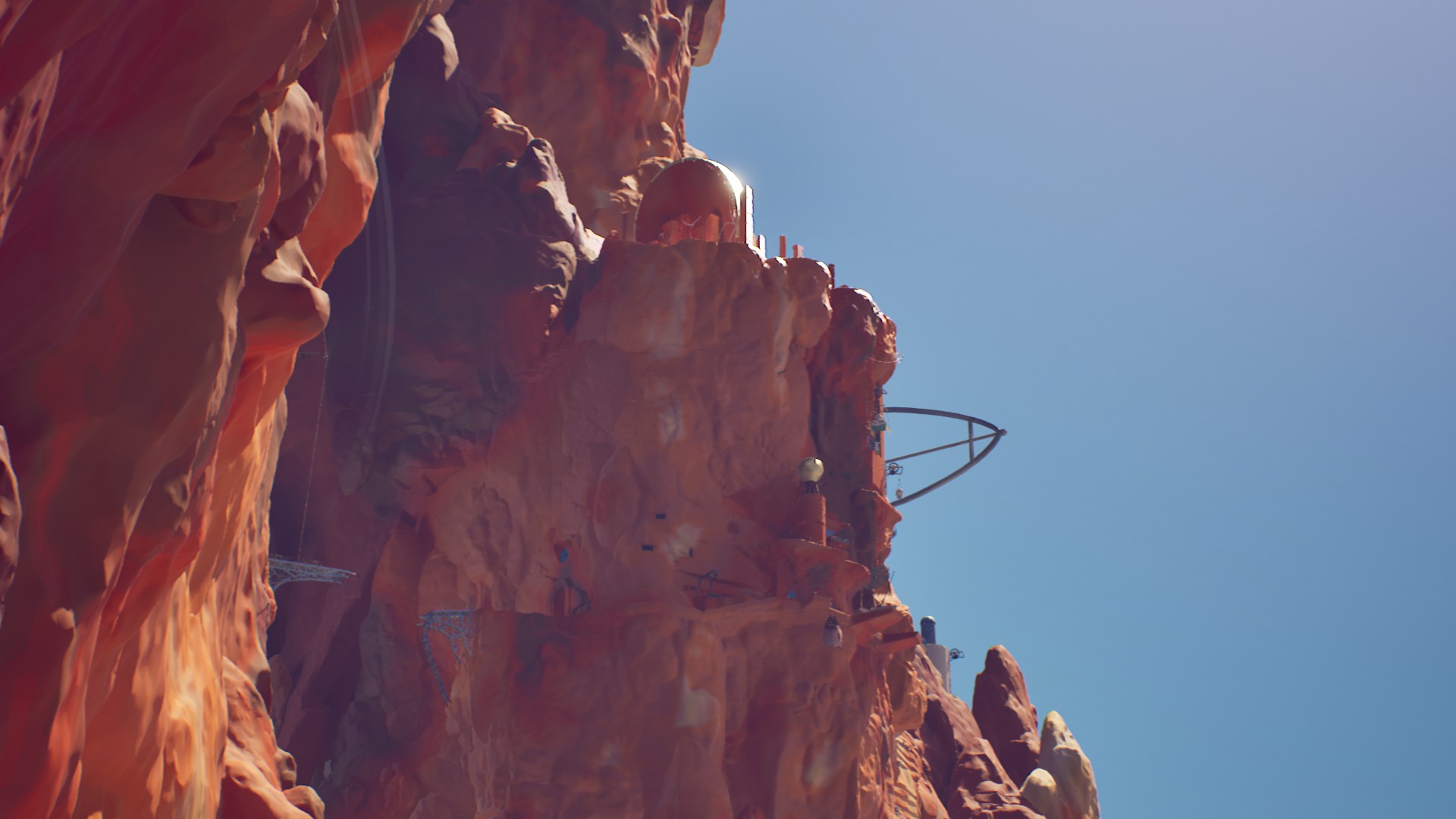
That’s not to say the gameplay lacks variety. Certainly, at first glance, you may have the impression of facing limited game mechanics. However, the developers have overcome this problem by offering to evolve in different biomes, both in terms of the environment and the fauna. The tower gives us the impression of traveling across several continents as its layers have little resemblance to each other. And these famous biomes will diversify the gameplay of Jusant. For example, the arid zone and its scorching sun jeopardize certain catches and drain our stamina more quickly. The decor therefore does not make an act of presence, since it also has a role on a narrative and playful level. The progress is all the more appreciable.
One last element comes to slide alongside you throughout the adventure: the Ballast, a cute little creature made entirely of water. She has a power which will also bring a new mechanism into play: she can bring the surrounding nature back to life. By activating your skill, you make plants grow, thus opening new passages to take to continue climbing the tower. This adds variety to the experience, which is not unpleasant. Moreover, it directly enriches the exploration part, which is so important in Jusant.
Exploration at the center of the experience
Getting to the top of the tower is not done by following a single path. Jusant is not linear, and even when taking the main road, it is often possible to choose several junctions. This is welcome, and as we’ve said before, the idea is not to rush to be done with the climb. In addition, if you do so, you will probably have completed the adventure in less than 4 hours, missing its beautiful message. You have to savor the relevant proposition of the game and its story which has the potential to confuse some players.
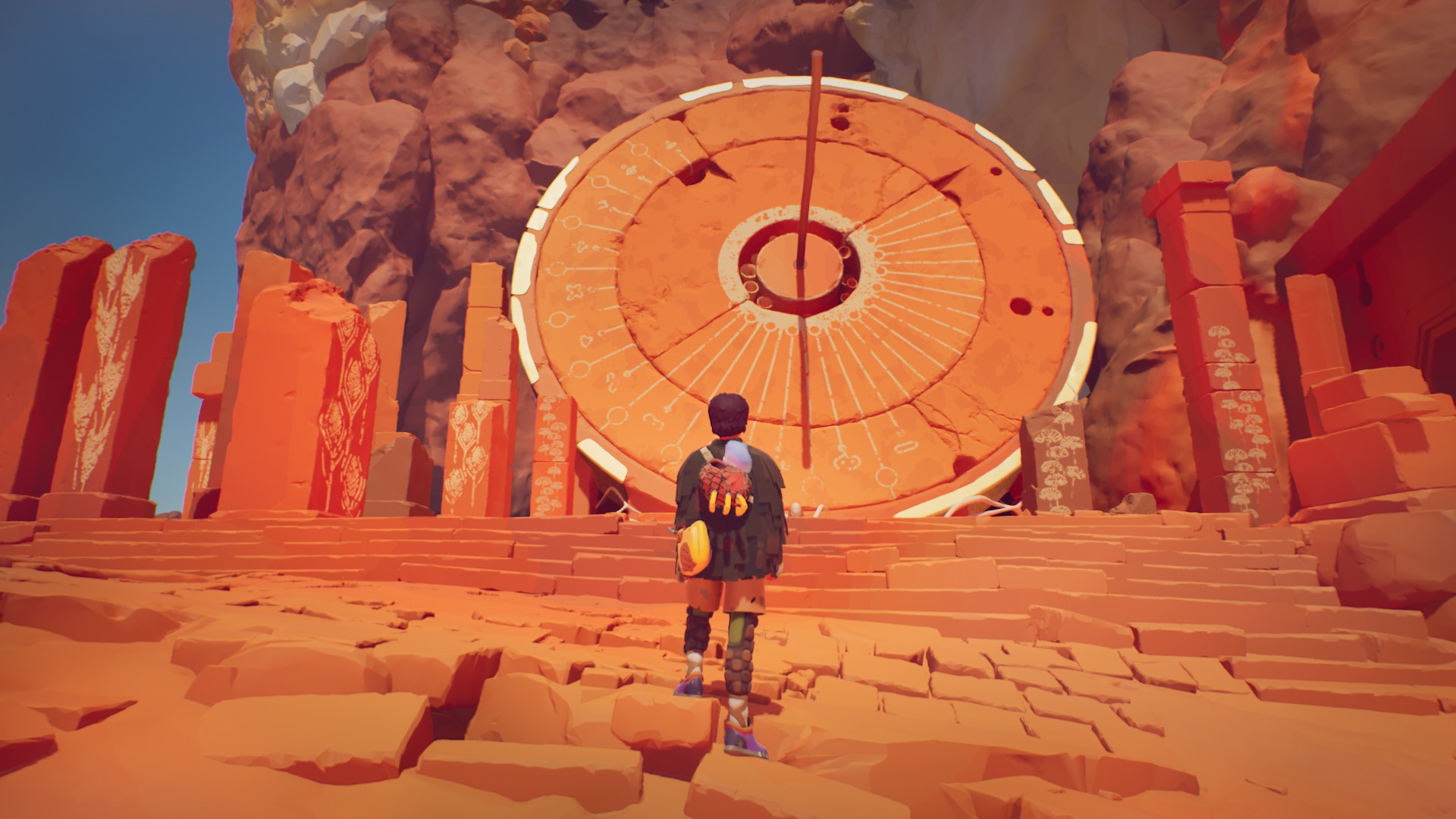
If you’re curious, the story of the tower isn’t complicated to follow and it’s quite simple to understand. This is less the case with the motivations of our protagonist, as well as the origins of the tower. There appear to be frescoes and other structures that belonged to an older civilization that once occupied the area. However, the game doesn’t go into detail about it, and it becomes too cryptic. Finally, we arrive at the end of Jusant without really grasping the meaning of what we saw, or what led us to undertake this task.
The scenario can therefore easily lose you, but that’s nothing serious. Exploring Jusant is pleasant for the simple reason that you get to see breathtaking panoramas. Many secondary paths exist parallel to the road to the summit. The game deliberately does not want to constantly indicate the route to take to the top of the tower. He wants the player to get lost, to take alternative passages, all in order to appreciate the beauty of Jusant. Believe us, you can miss out on great things. This reinforces the meditative aspect, because we sometimes wander aimlessly, and this is in no way a defect. The music in the game, quite discreet for the most part, also follows this logic, and they are a real delight for the ears.
